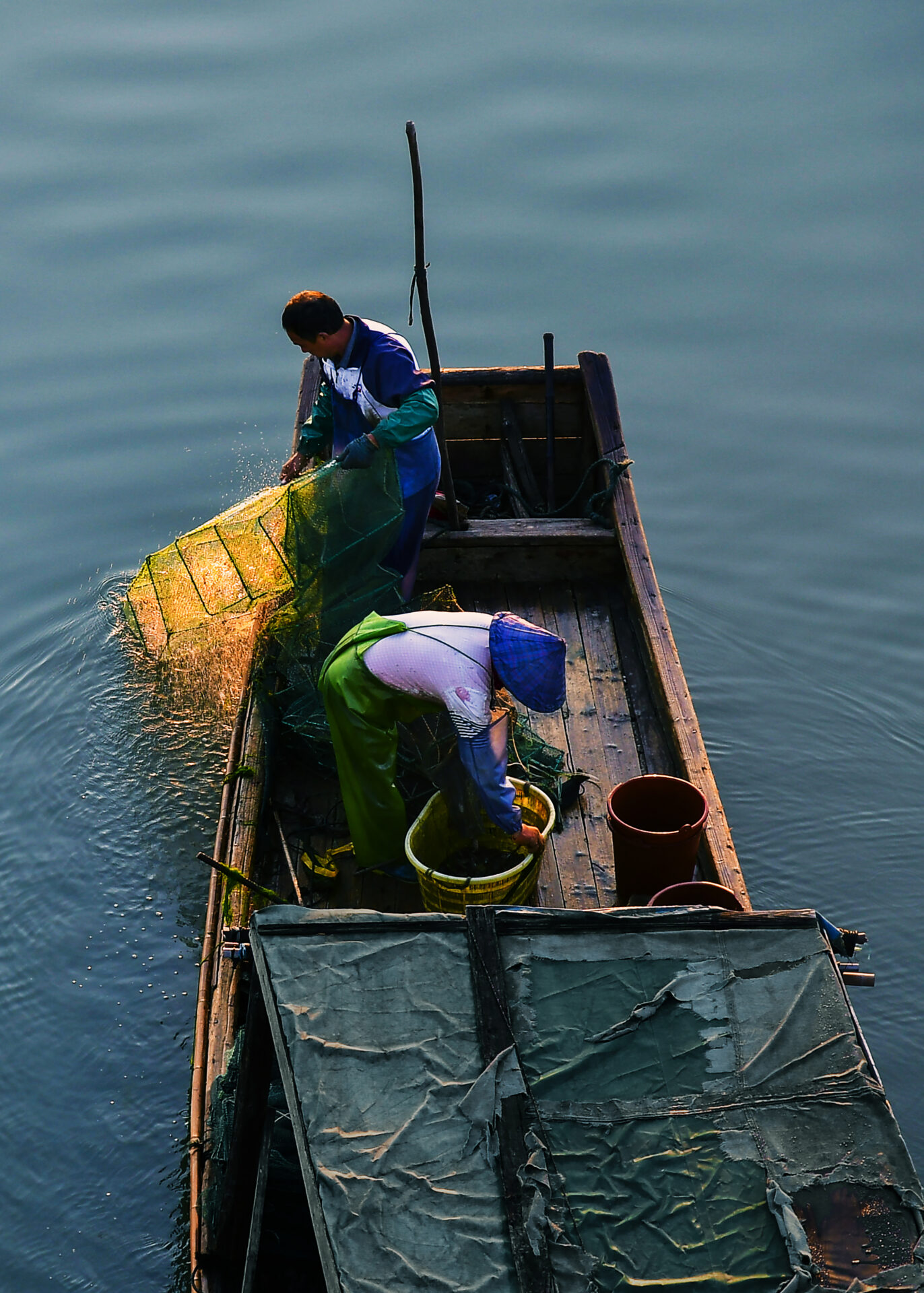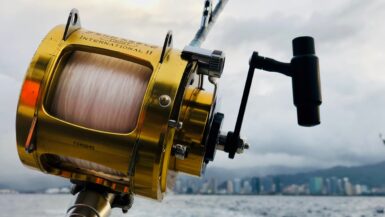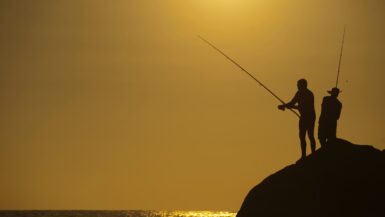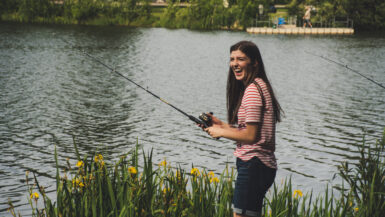If you’re looking to level up your fishing game and start catching carp in ponds, then you’ve come to the right place. Carp fishing can be a great way to expand your angling skills, as well as to provide delicious table fare. This article will guide you through the best techniques for catching carp in ponds, from bait selection to presentation. With the right setup and a few tips from the pros, you’ll be landing carp in no time!
Baiting Strategies
One of the most effective techniques for catching carp in ponds is using attractive baits. Good carp baits should be natural and have a strong scent, flavor and color. Popular carp baits include maggots, corn, bread, nuts, worms, and ground-up fish. When using baits, anglers should consider using multiple options, as carp can have different preferences. For instance, some carp may prefer bread while others may prefer worms. If a certain bait is not successful, consider switching to another type.
Location of the Bait
In addition to choosing appropriate baits, anglers should also think about where they are placing it in the pond. Carp tend to congregate towards the edges of the water, so anglers should try to place the bait near these areas. Additionally, anglers may want to spread the bait out in different areas of the pond, as carp can be spread out, rather than gathered in one spot.
Positioning the Hooks
Positioning the hooks correctly can also be key to catching carp in ponds. The best option is to use a float rig, which consists of an unhooking mat, float, and hooks. Position the float rig so that it is a few centimeters above the bottom of the pond. This will allow the bait to be at the correct depth for carp to find and will help keep the bait from sinking too deep. Additionally, anglers should consider using a larger hook, as carp have strong mouths and can easily bite off small hooks.
Quantity of Bait
Finally, anglers should pay attention to the amount of bait they are using. Too little bait won’t be attractive enough for carp to bite, while too much can cause them to become overloaded and lose interest. The right amount of bait will depend on the type and size of the carp. Consider experimenting with different bait levels to find the most successful combination.
By using the correct baits, positioning the hooks correctly, and choosing the right amount of bait, anglers can greatly increase their chances of catching carp in ponds. With the right techniques and patience, a successful fishing trip is possible.
Tackle Requirements
Catching carp in ponds is an exciting endeavor that requires the right knowledge, skills, and gear. It is important to ensure you have the best equipment for your particular needs. The main items that you should have when carp fishing in a pond include a rod, reel, line, lures, and bait. Additionally, you should always have an assortment of weights and rigs, as well as a net and landing mat, to make sure you can land your fish safely and securely.
Choosing the Perfect Bait
The type of bait that you choose can be one of the most important factors when it comes to catching carp in ponds. The most common bait used for carp fishing is boilies, which are a dough-like ball of flour that is mixed with various fish oils and liquids. You can also consider using sweetcorn, maggots, worms, and pellets as bait. Additionally, you need to make sure that the bait is presented correctly and in the right location so you give yourself the best chance of a successful catch.
Timing Your Fishing Trip
Timing is another key factor to consider when carp fishing in ponds. Carp tend to feed most actively during the summer months. During this time, they are more likely to be attracted to the bait, which can increase the chances of a successful catch. Additionally, carp are closely associated with the moon cycle, so it is important to consider the moon phase when you plan your fishing trip.
Identifying the Right Spots
Carp tend to favor certain areas of ponds, and it is important to identify these areas if you want to increase your chances of a successful catch. For example, they tend to hang out in deeper areas and near natural features such as weed beds. You should also look for areas that have an abundance of baitfish as these will usually attract carp. Additionally, you should try to avoid any areas that have been fished recently as this could make it harder to attract the carp.
Carp Fishing Strategies
Once you have all your gear, identified the right spots, and chosen the right bait, it is time to apply your carp fishing strategy. There are various techniques that you can use when carp fishing in a pond, such as floater fishing, ledgering, bottom bouncing, and spodding. Each of these techniques can be effective in different conditions and it is important to understand when and how to use them in order to maximize your chances of a successful catch.
Understanding Your Prey
Finally, it is important to gain an understanding of your prey. Carp are an intelligent species and it is important to know how they are likely to react to different baits in different situations. Additionally, you should pay attention to the natural environment in the pond, as this can help you identify the best spots and attract the carp. By having a good understanding of carp behavior, you can increase your chances of successful catches.
Finding Carp in Ponds
Before anglers can begin to find and catch carp in their pond, they need to first understand the ecosystem. Ponds can vary greatly in terms of size, shape, and fish populations. Knowing what type of fish are present, in what numbers, and the types of vegetation present will help you determine where to cast your line.
Optimizing Bait and Lure Selection
Carp are opportunistic feeders, meaning they will feed on whatever bait or lure is presented to them. When trying to lure carp, anglers should use the correct bait, and make sure they are using a method that is consistent with their local pond’s water characteristics. While carp will feed from the surface, they are not as likely to do so in shallow or still ponds. Therefore, anglers should choose lures and baits that can reach the depth of the pond.
Identifying Carp Habitats
Carp can be found in most types of ponds, but they typically prefer habitats that are deeper, with plenty of cover from aquatic vegetation or debris. Knowing which areas of the pond provide the best cover for carp can be the key to catching them. Anglers should focus on the areas around structure such as logs, rocks, and stumps, as well as near the edges of drop-offs and weed beds.
Anchoring and Positioning
When fishing for carp, anglers should consider where they place their boat and how they position themselves. In shallow ponds, anchoring in the middle of the pond can be effective, as carp often feed in these areas. If the pond is larger, anglers should try to move around the edges to find hotspots, and rest the boat in deeper water if possible. When fishing from the shore, anglers should move around to get the best view of the areas where carp are likely to be.
Utilizing Chum for Carp Fishing
Chumming is a popular technique for carp fishing. This involves spreading a mixture of grains or pellets that are attractive to carp in the water. Once the carp find the chum, anglers can cast their lines in the area and wait for the carp to take the bait. Chumming can be a great way to attract carp, as it draws them closer to the shore or boat.
Carp Fishing in Ponds: Final Thoughts
Finding and catching carp in ponds requires knowledge and patience. By understanding the pond’s ecosystem, using the right bait and lure, and utilizing chumming techniques, anglers can increase their chances of success. Once anglers have identified the best locations and techniques for catching carp, they can enjoy all the benefits that this rewarding sport has to offer.
Weather Considerations
When it comes to carp fishing in ponds, location matters. Many experienced carp anglers suggest looking for areas of a pond that have deeper water. This is because carp will often school up in these spots, making the fishing more successful. You should also look for areas in the pond that have food sources, like aquatic plants and insects, which carp love to eat. In addition, avoid casting where there are other anglers as carp are easily spooked.
Weather Conditions
Weather conditions play an important role in carp fishing off a pond. Windy conditions can be beneficial as it stirs up the pond’s bottom, attracting carp. On the other hand, sunny days can make carp more cautious and make them less likely to bite. Overcast days, when the water is slightly colder, can be best for carp fishing. Also, time of day can be a factor as carp tend to be more active at dawn and dusk.
Bait Selection
Selecting the right type of bait for carp fishing in a pond is essential. Carp are omnivorous, meaning they will feed on worms, insects, plants and even cheese. Experienced anglers recommend using sweet baits, such as corn, as well as baitfish, like minnows, to attract carp. Additionally, you can use bread as bait, which is easily available and carp love it. Just make sure you don’t overfill the hook with bait or the carp will quickly spit it out.
Tackle Set Up
When it comes to carp fishing in ponds, tackle selection is important. For a successful catch, choose a light rod and reel with a line weight of 8 to 10 pounds. This setup is best for carp since it allows the fish to take the bait and run, which makes them easier to catch. It is also important to choose a hook that is the correct size as carp have thick lips. A size 6 or 8 hook is best as it is not too thick, giving the carp a chance to take the bait.
Number of Rigs
Carp fishing in ponds requires the use of multiple rigs. Many experienced anglers suggest using a minimum of three rigs for the best chance at catching carp. For each rig, tie a light leader of about three feet to the main line. This will help prevent the carp from breaking the line during the fight. Each rig should also have a sized 6 or 8 hook and a suitable bait, like corn or bread. Finally, when fishing multiple rigs, place them in different areas of the pond to maximize your chances of catching a carp.
Setting Up a Fishing Spot
When you’re looking for the best techniques for catching carp in ponds, it’s important to start by finding the right spot. Carp tend to feed in areas of the pond that offer plenty of food, so you should try to locate a spot that has an abundance of aquatic plants or other food sources.
It’s also important to consider the depth of the water when selecting a spot for carp fishing. Carp typically feed close to the bottom, so you should try to find a spot that’s not too deep and not too shallow. You should also look for areas of the pond that have a steady flow of water, as carp are attracted to currents.
Preparing the Fishing Spot for Catching Carp
Once you’ve found a suitable spot for catching carp, it’s time to prepare the area. If the water is deep enough, you can use an anchor to help keep your fishing line and bait in place. If the water is shallow, you can use a heavy rock or other object to weigh down your line.
The next step is to prepare your bait. Carp feed mostly on small aquatic insects, so you should try to use a bait that mimics the size and shape of these insects. You can also use small pieces of bread or pellets that have been soaked in fish oil or flavoured with garlic or other attractants.
Final Tips for Catching Carp in Ponds
Carp fishing can be tricky and takes a bit of practice, but once you’ve mastered the basics you’ll be able to catch carp with ease. Make sure to check local fishing regulations for any size limits or other restrictions, and use proper tackle and techniques to ensure that you catch your carp safely and quickly.
Techniques for Hooking Carp
Carp are large fish native to Eurasia, highly prized for their delicious white meat. They can be found in almost all temperate water systems, living in both freshwater and brackish conditions. Carp are bottom-dwellers, feeding predominantly on plant matter and aquatic invertebrates, and can grow up to 30 inches long.
Where to Find Carp in Ponds
Carp prefer still water habitats and can often be found in the deeper parts of a pond. They like to feed in muddy areas during the day and can often be found foraging for food in shallower waters during lowlight periods. It is important to note that carp can be quite wary of anglers and easily spooked, so it is important to remain stealthy and quiet when fishing for them.
Baiting and Lure Selection
When fishing for carp in a pond, bait selection is key. Carp love to feed on worms, insects, and various other types of bait including corn and boilies. Natural baits are generally preferable as they are more likely to attract the fish, and it is important to remember to use fresh bait as carp can quickly become put off by spoiled or stale bait.
In addition to bait, the right lures can also be effective when fishing for carp in ponds. Spinnerbaits, crankbaits, and topwater lures can all be effective when used in the correct conditions and depths. Experimenting with different lures is key in finding the most effective ones for your pond.
Best Times for Carp Fishing in Ponds
The best time for fishing for carp in a pond is typically during the warmer months when the water is at its warmest. Early mornings and late evenings are also great times to target these fish as they tend to become more active as the sun begins to set.
Techniques for Hooking Carp
When fishing for carp in ponds, a bottom fishing approach is usually the most effective. Using the right bait and proper rig setup can help increase your chances of success. Most carp rigs are similar in design, however, each type of rig is tailored to a specific type of bait. It is important to use the right rig for the bait you are using and ensure that the bait is securely hooked onto the rig.
In addition, it is important to be patient when fishing for carp as they can often be shy and hard to catch. Moving around the pond and trying different locations will often result in more bites and increased carp catches.
Targeting Bigger Carp in Ponds
Bigger carp in ponds can often be more difficult to catch due to their size and caution. To target bigger carp in a pond, it is important to use bigger bait and heavier lines. Bigger bait will attract bigger carp and heavier lines will help prevent the carp from breaking free. In addition, it is important to remain stealthy when fishing for bigger carp as they are easily spooked and can quickly swim away if they sense danger.
Effective Tips for Fishing in Ponds
Carp fishing in ponds can be a great way to enjoy a day of fishing and catch some delicious fish for your family. There are a variety of methods for catching carp in ponds. Having the right rod and reel, knowing the best bait to use and setting up a successful bait presentation are essential for successful carp fishing. Using the right type of tackle and bait, the correct approach and taking the time to observe the pond’s conditions will help increase your chances of catching carp. Additionally, making sure to fish when the carp are actively feeding is also important. Following these tips will help you have a successful day of carp fishing in ponds.





Leave a reply